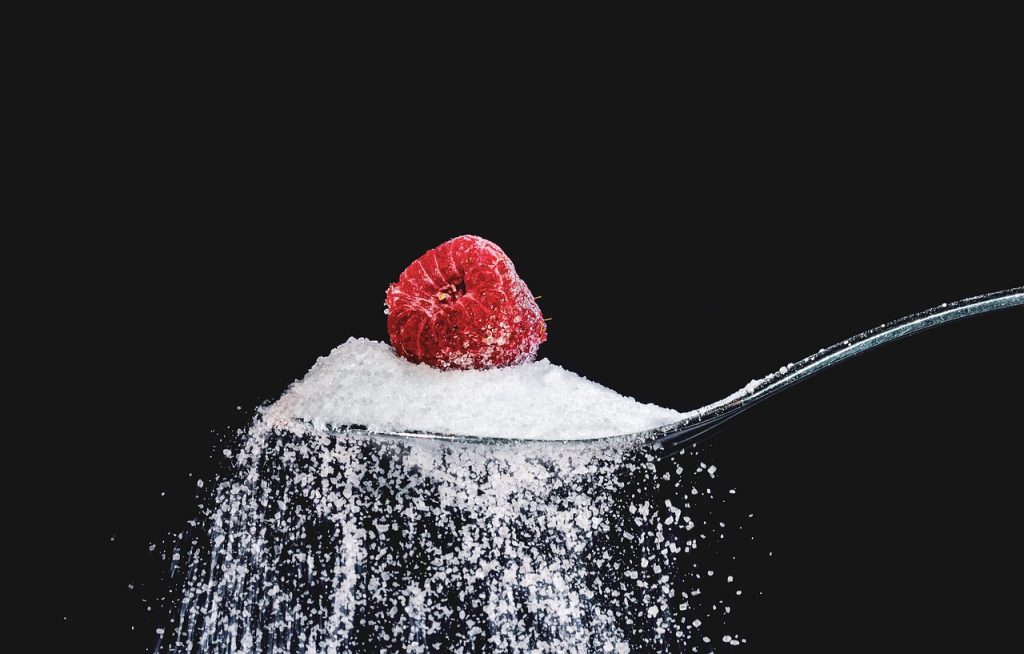Introduction:
Sugar and sweeteners play a significant role in our daily lives, adding sweetness to our favorite foods and beverages. However, for individuals with diabetes, managing sugar intake becomes crucial. In this article, we will delve into various sweeteners, their impact on blood sugar levels, and their suitability for individuals with diabetes.
What are Sweeteners?
Sweeteners are substances used to enhance the taste of food and drinks. They can be broadly classified into two categories: nutritive and non-nutritive sweeteners.
Nutritive Sweeteners:
Nutritive sweeteners provide calories and raise blood glucose levels. Common examples include table sugar (sucrose), honey, maple syrup, and agave nectar.
Polyols:
Polyols, also known as sugar alcohols, are a type of nutritive sweetener. They occur naturally in fruits and vegetables but are also produced commercially. Common polyols include sorbitol, xylitol, and erythritol. Polyols are lower in calories and have less impact on blood sugar levels compared to table sugar.
Polyols and Diabetes:
Polyols are partially absorbed by the body, resulting in a slower rise in blood sugar levels. They can be a suitable alternative for individuals with diabetes, as they have a minimal impact on glycemic control. However, excessive consumption of polyols can lead to digestive issues such as bloating and diarrhea.
Polyols and ‘Diabetic’ Foods:
Polyols are often used in “diabetic” or “sugar-free” foods to provide sweetness without adding excessive sugar or calories. These products are formulated to be lower in carbohydrates and may help individuals with diabetes manage their blood sugar levels. However, it’s important to read labels carefully and monitor portion sizes to account for any carbohydrates present.
Non-nutritive or Artificial Sweeteners:
Non-nutritive sweeteners, also called artificial sweeteners, are low-calorie or calorie-free alternatives to sugar. They provide intense sweetness without significantly affecting blood glucose levels. Common examples include aspartame, sucralose, saccharin, and stevia.
Types of Artificial Sweeteners:
Artificial sweeteners are available in various forms, including packets, granules, liquids, and tablets. Each sweetener has different characteristics, taste profiles, and heat stability, making them suitable for different uses.
- Aspartame: The Sweetener in Canderel and Hermesetas Granulated
- Saccharin: The Sweetener in Hermesetas Mini Sweeteners
- Sucralose: The Sweetener in Splenda
- Acesulfame Potassium (Acesulfame-K): The Sweetener in Hermesetas Gold Sweetener
- Cyclamate: The Sweetener in Hermesetas Liquid
Sweeteners and Cooking:
Sweeteners can be used in cooking and baking as a sugar substitute. They can help reduce calorie intake and manage blood sugar levels. However, it’s important to consider the taste, texture, and chemical properties of each sweetener when substituting them in recipes.
Which Sweeteners are Best for Cooking?
The choice of sweetener for cooking depends on the desired outcome. Some sweeteners, such as erythritol and stevia, can retain their sweetness when heated, while others may lose their sweetness or develop a bitter aftertaste. Experimentation and adjusting quantities are key to achieving the desired taste and texture.
Sweeteners from the Stevia Plant:
Stevia is a natural sweetener derived from the leaves of the Stevia rebaudiana plant. It is significantly sweeter than sugar but has zero calories and does not raise blood sugar levels. Stevia is available in various forms, including powdered extracts and liquid concentrates.
Natural and Artificial Sweeteners:
While natural sweeteners like honey and maple syrup contain beneficial compounds, they still impact blood sugar levels and calorie intake. Artificial sweeteners provide sweetness without the extra calories but lack the nutritional benefits of natural sweeteners. Choosing the right sweetener depends on individual dietary needs and preferences.
Sweeteners and Safety:
Sweeteners, both natural and artificial, have undergone extensive safety testing by regulatory authorities, such as the U.S. Food and Drug Administration (FDA) and the European Food Safety Authority (EFSA). These agencies have established acceptable daily intake levels for each sweetener, ensuring they can be consumed safely within recommended limits.
What Amount of Sweetener is Safe to Eat?
The acceptable daily intake (ADI) is the amount of a sweetener that can be consumed daily over a lifetime without adverse health effects. ADIs are established by regulatory agencies based on rigorous scientific assessments of toxicity studies. It is important to note that consuming sweeteners within the ADI does not pose a health risk for the general population, including individuals with diabetes.
Should I Eat Sweeteners?
The decision to consume sweeteners is a personal one. For individuals with diabetes, sweeteners can be valuable tools in managing blood sugar levels and reducing overall calorie intake. However, it is essential to use sweeteners in moderation and as part of a balanced diet. It is always recommended to consult with a healthcare professional or registered dietitian for personalized guidance.
Conclusion:
Sugar and sweeteners play a significant role in our lives, especially when it comes to managing diabetes and reducing overall sugar intake. Nutritive sweeteners, such as polyols, can be a suitable option for individuals with diabetes due to their lower impact on blood sugar levels. Non-nutritive or artificial sweeteners offer a calorie-free alternative to sugar, allowing individuals to enjoy sweetness without significantly affecting blood glucose levels.
When using sweeteners in cooking, it is important to consider their taste, texture, and heat stability. Experimenting with different sweeteners and adjusting quantities can help achieve desired results. Stevia, a natural sweetener, offers zero calories and doesn’t raise blood sugar levels, making it a popular choice for many.
Remember, consuming sweeteners within the acceptable daily intake levels established by regulatory authorities is considered safe. As with any dietary decision, moderation is key. If you have diabetes or any specific health concerns, it is advisable to seek guidance from healthcare professionals or registered dietitians to develop an individualized approach to sweetener consumption that suits your needs and preferences.
